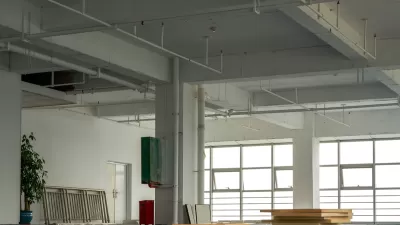In the time that it took Santa Monica to bring its housing plan into compliance with state requirements, a developer filed over a dozen preliminary applications under the obscure ‘builder’s remedy’ policy.

A developer has filed the first full application using the ‘builder’s remedy’ in Santa Monica, months after the little-known legal provision gained attention as an avenue for skirting local zoning regulations in cities that failed to submit appropriate plans under California’s Regional Housing Needs Assessment (RHNA). An article by Trevor Bach in The Real Deal explains the obscure law.
“Under SB 330, a pro-housing state law passed in 2019, developers are able to vest entitlement rights with only a preliminary project application and then file the full application within six months; this year the law emerged as a key factor in Southern California’s surprise surge in builder’s remedy applications, after a state agency affirmed in October that SB 330 also applies to the older provision,” writes Bach.
In its application, WS Communities (WSC) is proposing a 10-story apartment building that would include 20 percent affordable units. The company plans to develop 11 of the 14 preliminary sites they filed applications for in October.
“Earlier this fall, after the revelation of the builder’s remedy applications set off a local frenzy — and prompted hundreds of furious comments and emails from residents — the city began exploring potential legal options to fight the projects, particularly a proposed 15-story, 2,000-unit building on Nebraska Avenue, although experts quickly dismissed one potential strategy floated by the city attorney.”
FULL STORY: WSC files first full builder’s remedy application in Santa Monica

Manufactured Crisis: Losing the Nation’s Largest Source of Unsubsidized Affordable Housing
Manufactured housing communities have long been an affordable housing option for millions of people living in the U.S., but that affordability is disappearing rapidly. How did we get here?

Americans May Be Stuck — But Why?
Americans are moving a lot less than they once did, and that is a problem. While Yoni Applebaum, in his highly-publicized article Stuck, gets the reasons badly wrong, it's still important to ask: why are we moving so much less than before?

Research Shows More Roads = More Driving
A national study shows, once again, that increasing road supply induces additional vehicle travel, particularly over the long run.

Which US Rail Agencies Are Buying Zero-Emissions Trains?
U.S. rail agencies are slowly making the shift to zero-emissions trains, which can travel longer distances without refueling and reduce air pollution.

San Diego School District Approves Affordable Housing Plan
The district plans to build workforce housing for 10 percent of its employees in the next decade and explore other ways to contribute to housing development.

Lawsuit Aims to Stop NYC’s ‘City of Yes’ Zoning Reforms
A lawsuit brought by local lawmakers and community groups claims the plan failed to conduct a comprehensive environmental review.
Urban Design for Planners 1: Software Tools
This six-course series explores essential urban design concepts using open source software and equips planners with the tools they need to participate fully in the urban design process.
Planning for Universal Design
Learn the tools for implementing Universal Design in planning regulations.
City of Moreno Valley
Institute for Housing and Urban Development Studies (IHS)
City of Grandview
Harvard GSD Executive Education
NYU Wagner Graduate School of Public Service
City of Cambridge, Maryland
Newport County Development Council: Connect Greater Newport





























